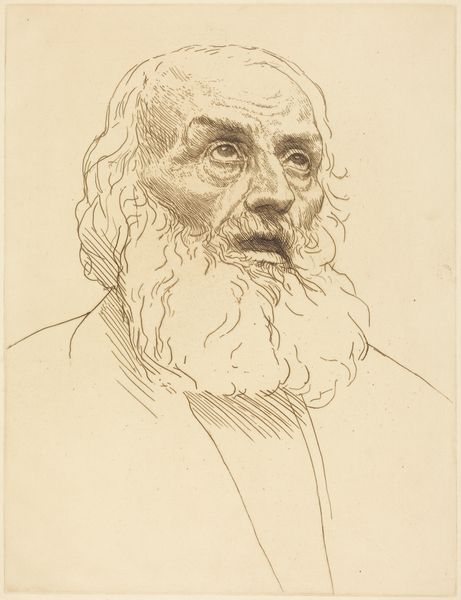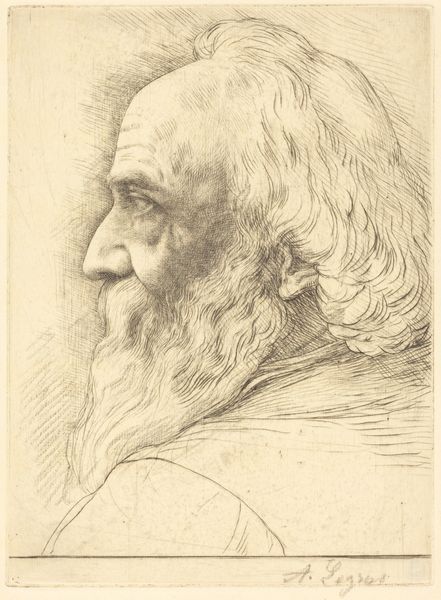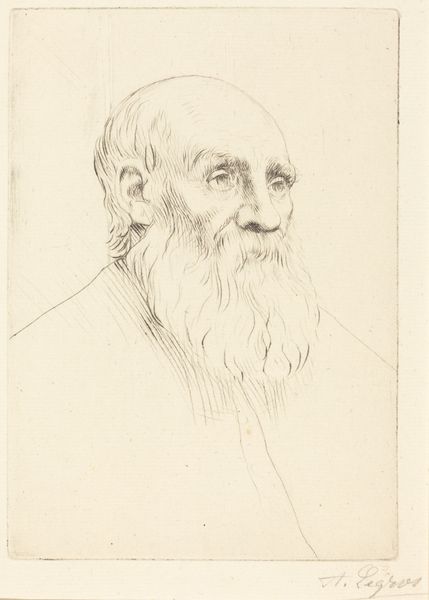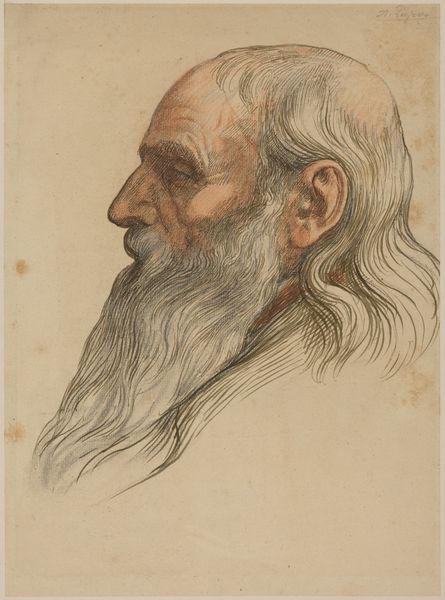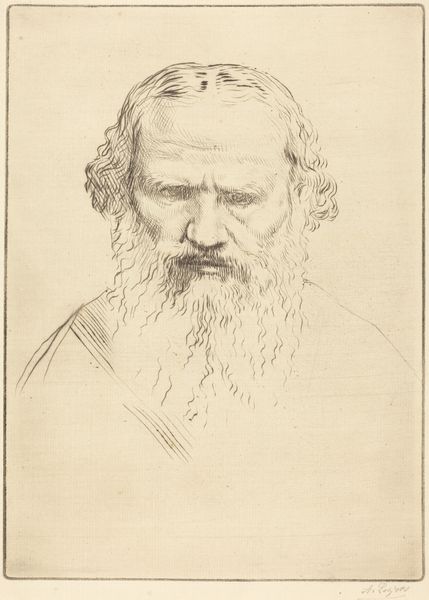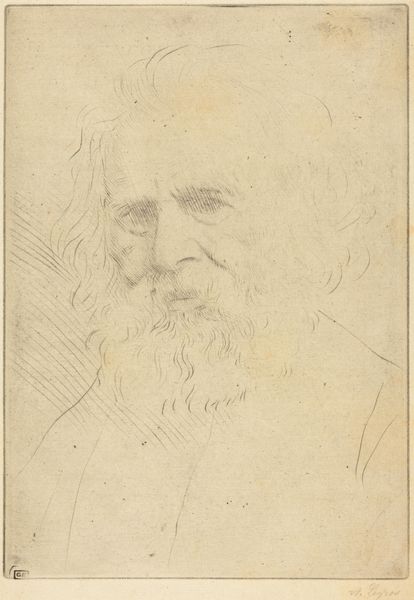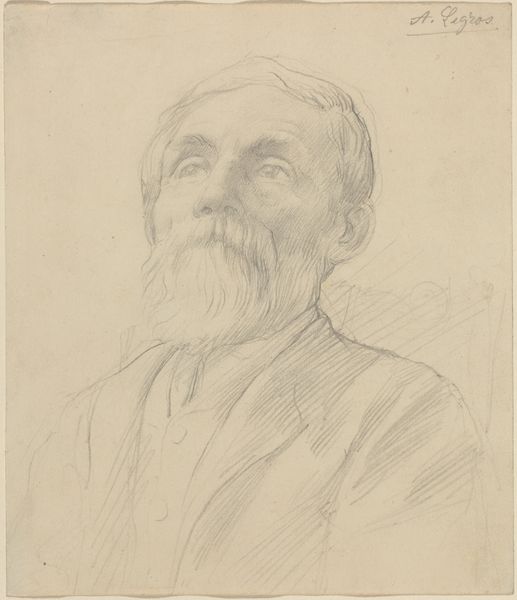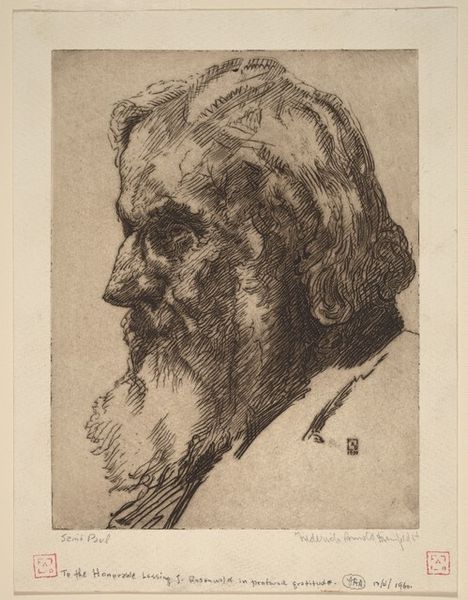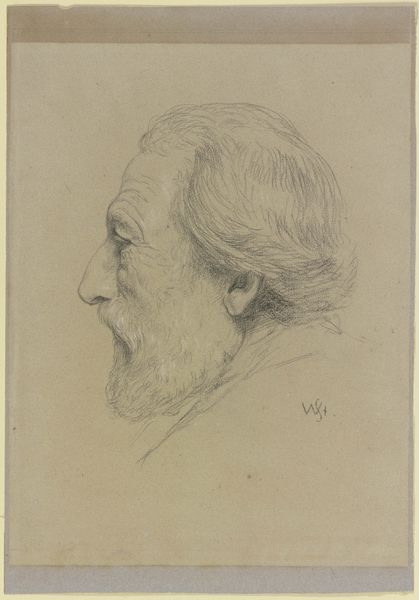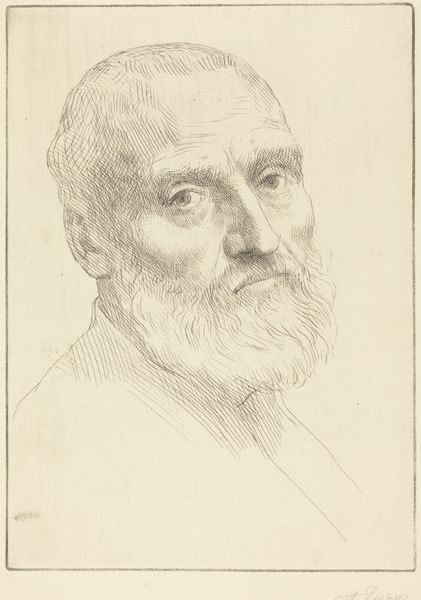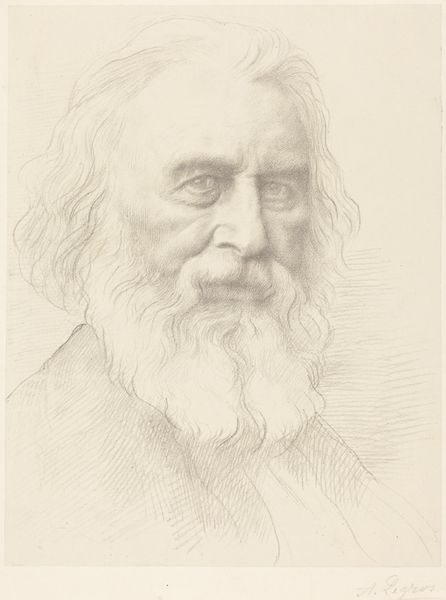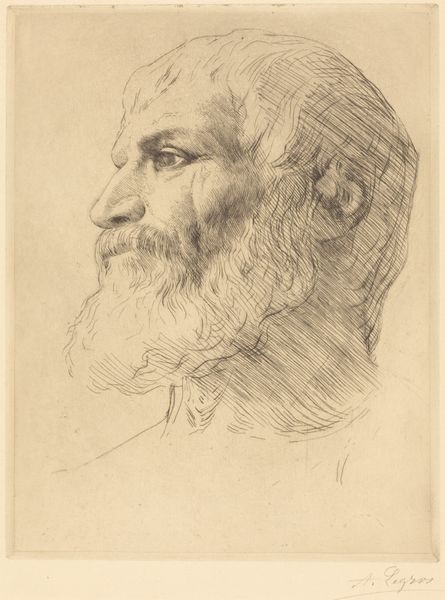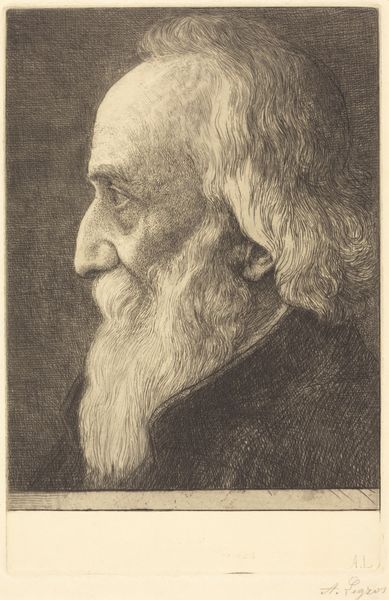
drawing, print, engraving
#
portrait
#
drawing
#
medieval
# print
#
portrait reference
#
pencil drawing
#
line
#
portrait drawing
#
engraving
Copyright: National Gallery of Art: CC0 1.0
Editor: Here we have "Lord A. Tennyson, 3rd plate" by Alphonse Legros, rendered as a print. The density of lines really creates a somber mood. I’m curious, what do you see in this piece? Curator: Formally, I am struck by Legros's mastery of line. Note the economy and precision with which he defines the contours of Tennyson's face and beard. How do you think the artist achieved the varying tones and textures with just line work? Editor: It seems like he layered the lines closer together for darker areas and left more space for lighter tones? Curator: Precisely. This technique, known as hatching and cross-hatching, is crucial to understanding the visual language of engraving. Notice, too, the subtle gradations that sculpt the form, giving it volume and depth. Do you observe any directional emphasis in the linework? Editor: Well, the lines seem to follow the shape of the head and beard, almost like he's mapping the form with them. Curator: An astute observation. The directionality of the lines reinforces the underlying structure of the portrait. Further, it's an exercise in restraint – extracting a likeness with such a limited means. What does that restraint communicate? Editor: It gives it a very serious, almost austere, feeling. Like there's no room for frivolous detail, just the essential form. Curator: Yes. It directs the eye and our understanding. It forces us to contemplate form and representation. Editor: That’s given me a totally new appreciation for the technique. Curator: And I'm given pause by the precision used to bring feeling to the eye and depth to the line.
Comments
No comments
Be the first to comment and join the conversation on the ultimate creative platform.
